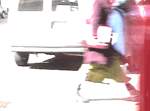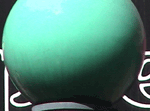The Mapping of Dispersion
In the early twenty-first century the idea of simplicity has been nearly lost, displaced by the concept that more pleasure and comfort can be gained from speed and technology. The rhythm of urban life is not so different from one country to the next. There is the morning rush hour, its traffic jams and pedestrian overflow during the business day, then the reverse rush at the end of the day as workers switch gears toward more leisure time in the evening.
Name a large city in a developed or underdeveloped country and you’ll get a variation on the same theme: intensity, action, speed, congestion, pollution, a simultaneity of thousands of things happening all at once, geared towards the accomplishment of a pursuit or necessity. New York, London, Tokyo, Bombay, Berlin, Paris, Madrid, Shanghai, and Rio de Janeiro all share a large populace within their borders. So many busy people in so many fields of activity…
Digital technology and its tentacles of communications have helped paint us a global picture that illustrates the phenomena of speed in relation to the unfolding of events. Worldwide news images downloaded from the Internet get circulated leaving pseudosensory impressions about the chronological order of a chain of events at some point on the map. These mechanized pictures are accepted as actual representation although their true value is more perception than sensory. The image is digested and discarded by the time a new image gets circulated. What is metabolized then is an exchanged rate of speed.
With that in mind we can make some observations about the video Duration: 1 Hour and 3 Minutes – Location: 17.3 Miles by New York based Brazilian artist Solange Fabião. In this project her subject matter is New York City with the focus being Broadway, a famous avenue laid out over a fabled Indian trail that connects multiple neighborhoods and economies on what is technically the longest single street in New York State. The video’s title specifies that it is a work partially about endurance and the lapse of time. However, it is also an elliptic document representative of a grand metropolis where potential, success, struggle, and failure meet successive generations of newcomers.
Manhattan is an island only 22.6 square miles in size yet there is nonetheless a seemingly infinite number of people traversing this finite amount of space. Architecturally there’s a melange ranging from low-rise brick storefronts and dwellings, to grand pre-war residential buildings and modern skyscrapers.
The city maintains a frenetic pace that Fabião has captured in dramatic fashion. Shot on an early March day at the dawn of the new millennium (when the break from an old century to a new one made the memory of the 1990’s seem so distant), the color footage has the pale, stark tones that are distinct to the New York landscape in late wintertime.
Her journey begins at Broadway’s crossroad border that separates the Bronx and Manhattan, she has filmed the street and its environs from the vantage point of a taxi’s passenger window. Voyeuristically she observes the street’s vicissitudes from block to block and neighborhood to neighborhood as a linear narrative ensues. The disparate multitudes of nonlinear moments are as diverse as the unwinding landscape that concludes near the financial district at Bowling Green.
The imagery picks up pace as we see fields of vision in movement, an interplay of foreground and background where objects integrate into each others shapes, the shapes gather collective momentum joining past, present, and anticipation of the future. A sudden shift in direction, then pause, and we make out loaves of freshly baked bread stacked in a storefront window, or details of outerwear garments on passersby. Concrete, metal, glass, barren trees, automobiles, trucks, and pedestrians all play a role in defining the shape and texture of the city.
Fabião acts as a flaneur, visually surveying the components of a place with detachment. As the speed of contemporary life accelerates we are drawn into a quandary over how to overcome a near addiction to "new technology," a term that is always in flux as the exponential rate of computing power multiplies in short spans. What is ironic is that we seem busier than ever, and the gadgets have made us desire more speed with a seemingly insatiable appetite for convenience and efficiency.
The decision to project the video onto a two-way screen contained in a sculptural object reflects on the fragmentary nature of simultaneity, or architecturally speaking that there is more than one way to see. Somehow then there is an unintended loss of simplicity that is reflected in her ongoing examination of major cities around the world.
In recollecting a moment of time we can muse about the conditions of life at the time, the sociopolitical climate (everyone’s fear, then relief, after Y2K), the dot-com and communications boom, or the implications of globalism on productivity. What occurs is a phenomenon of urban simultaneity, a conjuncture where the arc of time/space remains a constant. As the day begins in one place, in another it is winding down, and vice versa. Financial markets are a prime example of this flux.
The series represents a microcosm ruminating on the ambitions of man, and perhaps even a melancholy about what the ramifications of our deviation from nature mean globally speaking. One can make a quasi-scientific reasoning that a component of speed is slowness accelerated. That is where the gray zone of memory plays its hand in the concept of location and duration as a collective repository of the time-space continuum.
Max Henry

